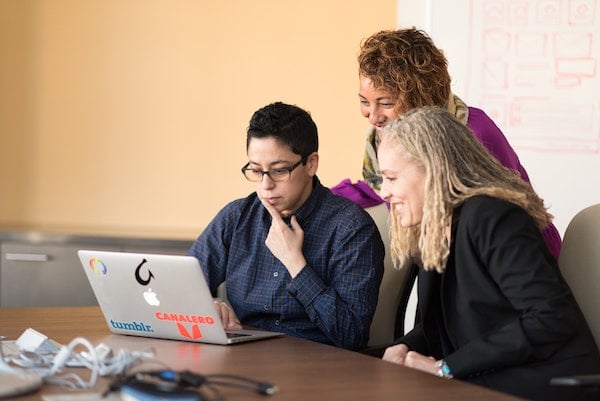Published on
Integrating Diversity, Equity and Inclusion into Community College Courses and Training

“The only valid philosophy for North Carolina is the philosophy of total education; a belief in the incomparable worth of all human beings, whose claims upon the state are equal before the law and equal before the bar of public opinion, whose talents the state needs and must develop to the fullest possible degree.” This is part of a quote from Dr. Dallas Herring, the father of the community college system in North Carolina, at the orientation conference for community colleges, technical institutes and industrial education centers in Raleigh, North Carolina, June 1964. Many people in the North Carolina community college system are more familiar with the line that follows: “That is why the doors to the institutions of North Carolina’s system of community colleges must never be closed to anyone of suitable age who can learn…” However, for me, the first sentence of his speech is equally important as it not only describes the education opportunity for every citizen in North Carolina, it is prophetic in how it also stresses the critical need for talent in the state at the present time.
The 2020-21 pandemic has further exposed workforce and education gaps across multiple industry sectors to the extent that these gaps threaten the growth of the state’s economy and the economic mobility of thousands of North Carolina citizens. Understanding the challenges facing the state and the community college system, North Carolina Community College president, Thomas Stith, upon taking over the role in January, communicated three visionary pillars for the system. He stressed that the 58 community colleges will be the primary engines for economic recovery, that the citizens in North Carolina will recognize the community college system as the most affordable option for higher education and that the system will be a national model for diversity, equity and inclusion (DE&I).
His emphasis on DE&I and the stress nearly every business sector is experiencing in finding talent as the economy emerges from the pandemic motivated me to look at how DE&I competencies are integrated into the courses and training provided by community colleges. My interest was not in programs or courses solely focused on DE&I, which are important and necessary, but instead on how our colleges are integrating DE&I into every aspect of instruction and course content. My working assumption, right or wrong, is that the inclusion of DE&I concepts and competencies is analogous to how instructors have infused employability skills like teamwork, leadership and work ethic into course content. I wondered about the extent to which DE&I concepts were already being integrated along with employability skills into the breadth of course content in the system.
Following a non-scientific, quick scan of just a few of the many courses offered by local community colleges, it appeared in some cases that integrating DE&I concepts into courses occurred. However, there is an opportunity to integrate DE&I concepts more widely into course content across the system. With this opportunity in mind, the next logical question to ask is, Does a rubric or process exist to help faculty evaluate existing content and integrate DE&I concepts into the fabric of every course and laboratory?
Conducting a simple Google search, I expected to find links to a wealth of information on best practices or integrating DE&I concepts into education and training programs. Disappointingly, the search revealed an apparent lack of available information online. Most reputable organizations and websites spoke more about creating DE&I programs for employees of corporations or were sales pitches for programs created by four-year universities targeting tech company employees for professional development. Although some of the content I located included principles and concepts applicable to organizations striving to create a more diverse, equitable and inclusive working environment, there was no information or advice for faculty or trainers looking to improve existing content by integrating DE&I concepts.
I also posed my question to several professional instructional design community groups on Facebook and LinkedIn, hoping that those the frontlines of existing training redesign would have more to say. My assumption was correct; corporate instructional designers (IDs) are integrating DE&I content into their trainings. For example, one corporate ID responded to my question with, “We (IDs) all take lots of trainings. We start with ourselves and our own growth. We work on making sure we use inclusive images and language. It’s more like a journey, like life-long learning, than any kind of destination that we actually reach. We respect that we may offend, and we can use that as a moment to apologize, learn and reset change the way we make our content.”
Another ID emphasized the importance of diversity in course imagery being truly diverse: “In our trainings, all human imagery is diverse in gender, color and even cultural identity (sometimes we use people with turbans or hijab, for example). And as our ID team is American, we try to be conscientious of using culturally neutral language since many of our trainees are not American (not just American idioms, for example). It should go without saying, but I’ll say it anyway: we also avoid any kind of stereotyping and try to be aware of possible microaggressions (obvious example: don’t make every manager a white man or every secretary a woman).”
Finally, most of the corporate IDs commented, “Listen. Learn. Then seek out voices different than your own. Hear the feedback. When you plop a character into your training, ask yourself why. Why that representation? Is that accurate? How can I shift that perspective? How can I use the power I am given in this teaching space to shift this conversation today?”
The corporate IDs’ responses offer a great framework for community college faculty and instructional designers reassessing existing courses and beginning the journey toward fully integrated DE&I content. However, I want to emphasize a point mentioned by a corporate ID who recently co-led a DE&I initiative at a large tech company and is also involved in coaching women interested in moving into the instructional design field and helping existing instructional designers integrate DE&I and mental health content into corporate training and work environments. She mentioned a term that was unfamiliar to me and posed a challenge to integrate the lesson behind the evolution of the term into the evaluation and redesign of existing community college courses. That term is intersectionality.
Intersectionality was coined in the 1980s and 90s by Kimberly Crenshaw, a lawyer and professor at Lafayette College, to deal with the fact that many of our social problems like racism or sexism overlap and create multiple levels of social injustice. It’s basically the idea that sometimes we experience discrimination, based on the identities we have. In order for us to perform optimally at work, we need the freedom to bring all our identities to work. The term intersectionality came out of a case that Professor Crenshaw was studying. In 1976, an Black woman named Emma DeGraffenreid was laid off from a job at a local car manufacturing company. Emma believed that she was discriminated against and filed a lawsuit. The company’s lawyers proved to the judge, that Black people were hired and employed by this company as were women, and the judge therefore dismissed her case. What the judge lacked to see was that the company hired and employed Black men for industrial or maintenance jobs, and they employed white women for secretarial or front-office work, but they did NOT hire Black women. So, Emma endured racial discrimination from one direction and gender discrimination from another–and they compounded and affected her life in unanticipated and misunderstood ways.
The term intersectionality helps explain the ways that multiple forms of inequality or disadvantages compound themselves to create obstacles that rarely understood within conventional thinking about anti-racism, feminism or whatever other issues people are dealing with. Intersectionality is truly crucial to social equity at work and should be included in the framework around any and all integrating DE&I concepts into education and training.
A Framework for Colleges
Below is a framework, a starting point for faculty and colleges, but it is not the end point. Use this framework, but dive deeper and work with DE&I experts and students from underserved populations.
1. Professional Development: seek to provide faculty and staff with the best information and professional development on DE&I. Creating a model community college system for DE&I must begin within our own workforce of staff and faculty
2. Understand Intersectionality and ensure classroom environments and lessons do not violate this concept (i.e., recruit diverse faculty for technical and trade programs)
3. Evaluate each course, lesson and activity, keeping an eye out for imagery, language and perspective built into the content. Ask hard questions: Is the content truly representative of all races, religions, sexual orientations and genders?
4. Avoid stereotypes and microaggressions
5. Engage people different from yourself and seek feedback from underserved groups
With the lens of Intersectionality in mind, each college needs to step back and look at their internal environments, faculty workforce, policies and ask, Is the institution a model for DE&I in every facet of operation, education and training? Furthermore, to get to the point where DE&I concepts are commonplace in every training and course offered by community colleges, we must check the system’s existing catalog of courses and find programs with gaps or exclusion in the content. As one corporate ID said, How can we use the power we are given in the teaching space to shift this conversation today?
Disclaimer: Embedded links in articles don’t represent author endorsement, but aim to provide readers with additional context and service.
Author Perspective: Administrator



